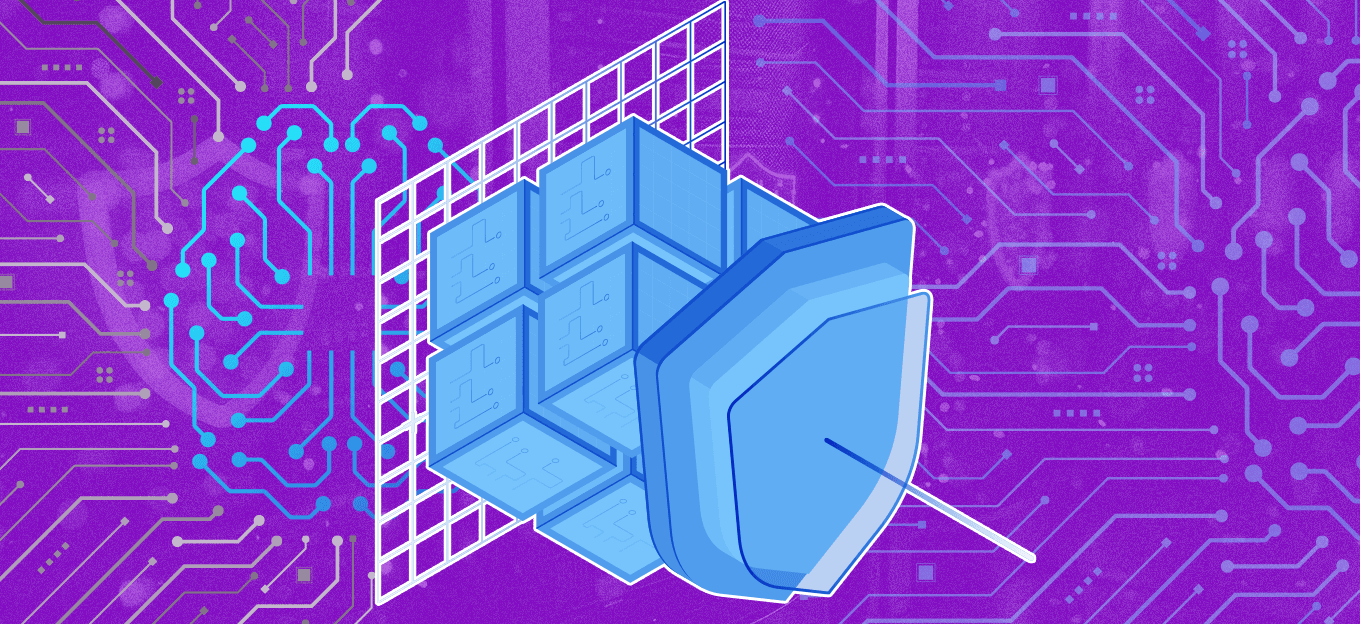IoT Security: What are the Challenges and Battle-Tested Solutions
IoT Security: What are the Challenges and Battle-Tested Solutions
- Last Updated: July 8, 2025
Aeris
- Last Updated: July 8, 2025



The rise of the Internet of Things (IoT) has redefined how we live and work, enabling everything from smart homes to industrial automation. However, as the number of connected devices climbs into the tens of billions, so does the potential attack surface for bad actors. In this increasingly connected world, IoT security is not just a best practice—it’s a necessity.
Industries rely on IoT devices from healthcare to transportation, often deployed in distant or hard-to-reach environments. These remote IoT deployments introduce unique vulnerabilities that traditional IT security frameworks were never designed to handle.
In this blog, we’ll explore the pressing security challenges for IoT environments, examine real-world IoT threats and highlight battle-tested solutions that help mitigate IoT risks and ensure resilience.
What is Remote IoT Security?
Remote IoT security refers to the technologies, strategies and best practices designed to protect IoT devices that operate in geographically dispersed, often unattended locations. These devices may be embedded in vehicles, infrastructure, agriculture, or consumer applications—anywhere that real-time monitoring or autonomous decision-making is required.
Securing these remote endpoints involves a holistic approach that spans hardware, software, network and cloud components. Given the diverse range of devices and use cases, IoT security must be flexible, scalable and designed with the long-term lifecycle of each device in mind.
Why is Remote IoT Security So Important?
The dangers of IoT attacks go far beyond data breaches. Vulnerabilities in remote IoT devices can disrupt entire supply chains, threaten human safety, or serve as gateways into critical infrastructure. Remote devices are also more complex to monitor and patch, making them ideal targets for persistent and stealthy attacks.
As the IoT security landscape evolves, the stakes have never been higher. On average, every week, 54 percent of organizations suffer from attempted cyberattacks targeting IoT devices, according to research from Checkpoint. A report from Forrester, Top Trends Iin IoT Security In 2024,” cited in Venture Beat, found that 34 percent of enterprises that experienced an IoT device breach were more likely to report cumulative costs between $5 million and $10 million, significantly higher than the costs typically reported for breaches that did not involve IoT endpoints. (By comparison, Ponemon’s “Cost of a Data Breach Report 2024” report puts the average of all instances at $4.88 million.)
Not surprisingly, nearly all (95 percent) respondents in Beecham Research’s 2025 study, “Locking in Value with IoT Security,” deem IoT Security to be “important” or “extremely important.” Additionally, 77 percent recognize the importance of an IoT security framework and either have a comprehensive framework in place or are updating or developing one. This urgency is reinforced by increasing regulatory pressure, such as the U.S. Health Insurance Portability and Accountability Act (HIPAA) requirements in healthcare, the EU General Data Protection Regulation. (GDPR) and the upcoming EU Cyber Resilience Act, all of which demand stronger controls for connected devices.
The Unique Security Challenges of Remote IoT Devices
Tackling IoT security challenges requires navigating distinct obstacles that differ from traditional IT or on-premises systems. These challenges stem from the nature of how and where IoT devices are deployed—often in distributed, resource-constrained and difficult-to-access environments. Among the most critical barriers to implementing effective IoT security in these contexts are the following:
1. Scale and Diversity of Devices
One of the defining characteristics of IoT is the sheer number and variety of devices, measuring in the billions globally. Each device may run different firmware, use different protocols and connect via different networks. Managing IoT network security at this scale is daunting and requires strong orchestration tools and standardized security baselines.
2. Limited Resources
Many IoT devices operate with minimal memory, storage and processing power. These constraints limit the ability to run conventional security software, such as antivirus or endpoint detection tools. IoT protection requires lightweight, embedded security mechanisms that can function within these limitations.
3. Insecure Network Interfaces
IoT devices often use a variety of wireless protocols, such as Wi-Fi, Bluetooth, Zigbee or LTE, to name a few, that may have their own vulnerabilities. Misconfigurations or outdated firmware can expose IoT security issues like open ports, unencrypted communications and exploitable APIs.
4. Weak or Default Credentials
A surprisingly high number of consumer and industrial devices ship with factory default login credentials, which end users rarely change. These weak authentication schemes are a common vector for IoT security breaches and botnet recruitment.
5. Lack of Standardization
The IoT industry remains fragmented. Without universal standards, device manufacturers adopt their own protocols, update mechanisms and security postures. This inconsistency introduces IoT security concerns around interoperability, update reliability and enforcement.
6. Remote and Unattended Operation
Many IoT devices are deployed in locations where physical or even virtual access is limited. This complicates updates, diagnostics and monitoring, leaving devices vulnerable to physical tampering, outdated software and undetected compromise.
In regulated industries like healthcare, finance and utilities, these challenges are compounded by compliance requirements, such as the U.S. Food and Drug Administration (FDA) cybersecurity guidance for medical devices, Payment Card Industry Data Security Standard (PCI DSS) in retail and North American Electric Reliability Corporation – Critical Infrastructure Protection (NERC CIP) standards for energy providers.
Real-World Threats and Attack Vectors for Remote IoT Devices
The list of IoT security threats continues to grow as attackers exploit both old and novel vectors:
- Botnets (e.g., Mirai): Malicious actors exploit weak credentials or open ports to recruit devices into large-scale botnets, which can be used for distributed denial of service (DDoS) attacks.
- Man-in-the-Middle Attacks: Attackers intercept unencrypted communications between devices and servers, altering or stealing sensitive data.
- Physical Tampering: Devices in remote or public areas are susceptible to manipulation, reverse engineering or component theft.
- Firmware Hijacking: Malicious firmware updates can give attackers complete control over the device, enabling espionage or sabotage.
- Supply Chain Attacks: Compromise in third-party vendors, open-source components, or partner systems can threaten the supply chain.
- Side-Channel Attacks and Exploits: Attackers increasingly use sophisticated methods to gather data from electromagnetic emissions or fluctuations in power consumption.
Battle-Tested IoT Security Solutions
The complexity of today’s threat landscape demands more than quick fixes or reactive tools. Organizations securing remote and distributed IoT environments need proven, scalable solutions to withstand common and sophisticated attacks. The following strategies for IoT security reflect industry best practices and align with guidance from the Cybersecurity & Infrastructure Security Agency on securing the Internet of Things and other network edge devices and are designed to support compliance with regulations like the EU’s Cyber Resilience Act, EU’s Network and Information Security Directive 2 (NIS2) Directive, and sector-specific mandates such as HIPAA and ISO/IEC 27001 to ensure that risk mitigation keeps pace with rapidly evolving threats.
1. Device Authentication & Authorization
Secure identity is foundational. Devices should be assigned immutable identities—often embedded in hardware—and use protocols like mutual Transport Layer Security (TLS) to authenticate their identities with cloud platforms. A hardware root of trust (RoT) built into IoT devices ensures that only authenticated and authorized devices access the network.
2. Secure Boot & Firmware Updates
Cybersecurity for IoT starts at boot when a device is powered on and ready to use. Secure boot ensures that only verified firmware can be executed, preventing bootloader exploits that inject malicious code that loads before the operating system starts. Encrypted firmware updates and rollback protection guarantee that only legitimate patches are installed. This is crucial to avoiding IoT security problems involving outdated or compromised code.
3. Network Segmentation & Firewalls
Segmenting IoT devices from core infrastructure prevents lateral movement in case of a breach. Virtual firewalls and software-defined networking (SDN) allow granular control over traffic, reducing exposure to IoT security risks.
4. Continuous Monitoring & Threat Detection
Behavioral analytics and anomaly detection systems monitor device activity for deviations that may signal compromise. Centralized visibility into IoT security hacks enables faster response and limits damage.
5. Lifecycle Management
From provisioning to decommissioning, lifecycle security ensures that devices are patched, monitored and properly retired. Automated workflows help enforce compliance and reduce human error in managing IoT security issues.
6. Edge Computing and Local Security Enforcement
By enabling local decision-making, edge computing reduces latency and avoids sending sensitive data over networks. Security policies can be enforced locally, minimizing exposure to IoT security issues.
The Most Comprehensive IoT Newsletter for Enterprises
Showcasing the highest-quality content, resources, news, and insights from the world of the Internet of Things. Subscribe to remain informed and up-to-date.
New Podcast Episode

Moving Past the Pilot Phase in IoT and AI
Related Articles


